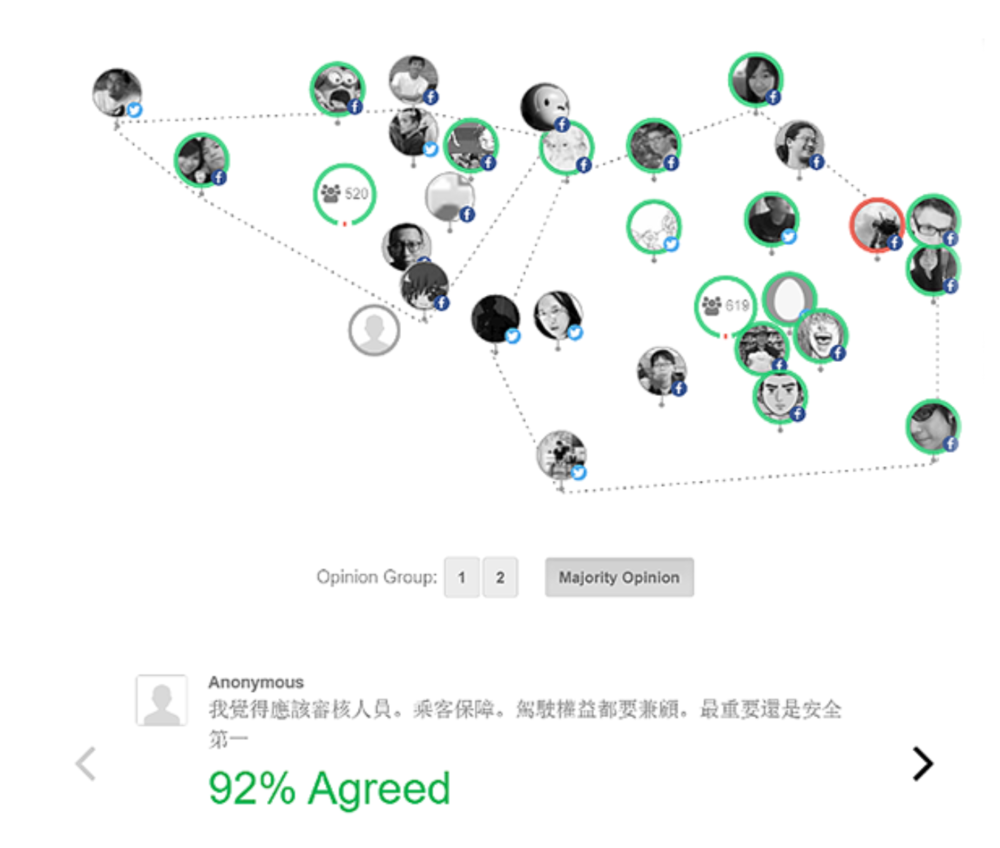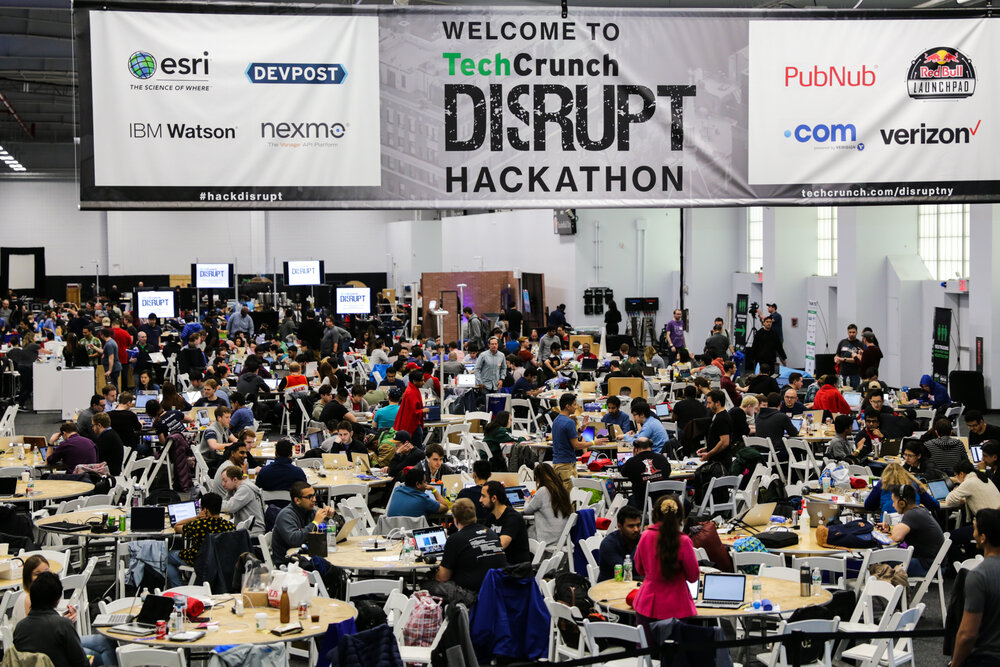Imagine a digital technology that improves democratic discourse, instead of destabilising it. Imagine a form of algorithmic design which yields consensus, rather than cleavages. Audrey Tang is on a mission to spread such tools worldwide.
The Taiwanese digital minister has become somewhat of a breakout star in 2020, as a result of their key contribution to the nation’s COVID-19 response. Policy wonks have craned their necks towards a country that has experienced positive economic growth in 2020, while, up until November, had gone 200 days without a domestic COVID-19 infection.
My own ‘Tang moment’ came in June this year, when I attended a conversation between Audrey and Yuval Noah Harari, hosted by the social movement RadicalxChange. Having always been in awe of the intellectual capacity that historian Harari possesses, I was blown away by encountering somebody that was more than his equal. Audrey came armed to the teeth with novel philosophical claims, policy recommendations and case studies that showed how to empower a civic democracy using technology.
(Ahead of the pack – Taiwan outshines the rest of the world on its COVID response)
Tang outlined how in February 2020, Taiwan faced a mask problem. Certain shops were completely out of stock, and there was insufficient information on where to access stocked stores. Software engineer Howard Wu made a website using Google Maps to coordinate crowdsourced data from Taiwanese citizens, providing information on where stocked stores were. This site got millions of hits – but a problem arose.
Google charge microtransactions for every 1,000 times the map is accessed by users – giving Wu an enormous bill. Tang spotted this, and helped to offset the cost by incorporating the open data system into the country’s National Health Insurance scheme.
This is just one of many examples in which Taiwan has been leading the way in digital governance. So the question facing the policy community around the world right now should be: what can we learn from Taiwan?
The central pillar to the Taiwanese approach is g0v. G0v, or gov-zero, is a ‘shadow government’ made up of coders, NGOs and civil servants. It clones government websites to build better projects and public services, which the government will often adopt in turn. Social technologies are at the heart of this ecosystem.
Rebooting democracy
Democracies across the world are grappling with the problem of how to mitigate political polarisation. With weak institutions that cannot properly facilitate healthy discourse, robust discussion risks being swept away via a blend of poor governance and technological disruption.
vTaiwan, a consultation process, may offer a solution via AI-mediated consensus. The site acts as a community for participants to discuss policy issues in a manner that reduces social division. Using a technology known as Pol.is, machine learning groups together like-minded participants with other differently-minded users.
One by one, an individual will post a statement about the item of discussion. People will be asked to merely agree or disagree; at this moment, direct reply comments are not allowed in order to minimise trolling or abuse. Statements will keep iterating as each individual is asked to propose something more nuanced than previous comments, until the platform reaches a statement that will eventually resonate with the majority of people.
(Screenshot from the vTaiwan consulting process)
The visualised data above lets people see that their friends and family are placed all over the opinion board. In real time, positional changes can be observed, demonstrating that it is acceptable to move positions.
Pol.is was used to help decide how to regulate Uber; a platform that received fierce opposition from many taxi drivers. This kind of engagement helps ensure that emerging technologies create public value. Democracy should be recognised as a conversation between diverse principles. In this vein, Pol.is and the vTaiwan schema enable people to contribute to common values despite holding differing positions.
A new form of public choice
Another issue plaguing the democratic process is known as the ‘tyranny of the majority’. Here, the majority of the electorate can exclusively pursue their own objectives at the expense of minority groups. Refugee policy, transgender rights and government benefits all fall into this category of public choice problem, where the issues that are of upmost importance to small but meaningful alliances within a nation are pushed to one side.
Taiwan has approached this problem by adopting what is known as Quadratic Voting (QV) in some digital processes. In QV, voters are allocated a fixed budget of ‘voice credits’, which they can use to vote on a given question. Voters can allocate more credits to an issue that they feel strongly about, thus recognising voter preference in a richer manner. This will allow minorities to have a greater say in the issues that matter to them.
But couldn’t this lead to a situation where people save their credits and not vote, as they are aware that other voters who are highly passionate about issue X will do so for them? In economics, this is known as the ‘free-rider problem’. This posits that members of the public can gain from the public good/choice without paying for it (where in this case, payment is the cost of voting). How does QV attempt to solve this?
This is where the ‘quadratic’ element comes into play. The cost of an additional vote is the square of the number of votes a voter decides to cast. So 1 vote = 1 credit, 2 = 4, 3 = 9, and so on (here is an adaptable spreadsheet that shows it in practice). This reduces the risk of ‘free-riding’ by forcing people to think very carefully about where they assign strong voting preferences.
Since the cost of assigning strong preference increases in an exponential manner, it will occur less frequently, and therefore the ability to ‘free-ride’ is reduced. As a result, there is an incentive for all voters to vote for what they care about. This concept was developed by political economist Glen Weyl, co-founder of RadicalxChange, which has a close working relationship with the Taiwanese government (indeed, Tang sits on the RxC board).
Here, Taiwan has once again pioneered in this new form of public choice. QV is used to decide the winners of the Presidential Hackathon – a three-month-long event where anyone can propose an idea which uses data to improve the common good. Here, the ‘common good’ involves being aligned with at least one of the 17 sustainable development goals. The hackathon itself is codified into the constitution, and therefore must run annually.
QV is also used in the government’s e-democracy platform Join, which considers issues beyond the digital economy, such as infrastructure and education policy. With over 4 million active participants (around a fifth of the country’s population), Taiwan is showing an alternative path to public decision-making which combines technology with revolutionary social choice mechanisms.
Radical Transparency
A final component of Taiwan’s digital democracy involves radical transparency. Tang keeps a transcript of all their own conversations. This many sound intuitively creepy to many, but many in Taiwan see it as a key policy in fighting misinformation. The V-Dem Institute 2019 Report cited that Taiwan faces a growing problem from Chinese misinformation being distributed into the country. Transcripts help to reduce such a risk.
Furthermore, by making conversations public, government discussion is scrutinised by the general population. As a result, this presents a form of mechanism design that makes sure that the public good is discussed as much as possible.
This technological innovation has helped to reimagine our conception of a public community. A commitment to open data and consensus-driven algorithmic design presents an opportunity to scale-up government functionality, whilst creating a digital space that seeks to unite, rather than divide.
But would this work elsewhere?
Now, policymakers should be scrambling to soak up as many Taiwanese ideas as possible. But it is worth considering some of the potential problems with importing these methods. I have seen very little consideration of this, so it is worth posing as a ‘friendly critic’.
One of the first problems that may arise from adopting the above techniques comes with digital inclusivity. A reasonable claim may be that the success of these programmes may well be dependent on a high level of ‘digital literacy’ and computational experience. In the UK, only 35% of STEM students in higher education are women. Whilst STEM has a degree of racial diversity, Black and Hispanic students are much less likely to enroll in STEM courses at US colleges. If only certain people can create the technologies, there will still be a problem around who the technology is created for.
Drilling into the data, a surprising find is that whilst the majority of Taiwanese professionals are women, Taiwan actually has a slightly bigger STEM gender gap than the UK. Given that Taiwan has become increasingly progressive when it comes to universal rights and other indicators, this points to a potentially interesting set of conclusions. First is that Taiwan is far from the finished article, and clearly has some way to go in improving access for all. The second is that metrics such as STEM grads are not the only way to assess effective adoption of a new technology. Amongst other things, what matters too is a willingness to engage, and a more general public knowledge of the tools at their disposal.
So, more broadly, could there be an issue getting people to engage with hackathons? Do other countries have an appetite for coding in the same way as Taiwan? Will people understand the concepts in Quadratic Voting? Although some nations may not possess the same computing competency, there are plenty of examples where civic hackathons and other methods are being applied beyond Taiwanese shores.
Delaware has hosted ‘Open Data Challenge’ hackathons, which have helped contribute to improving urban transport policy. QV was recently used in the Colorado House of Representatives in 2019. In addition to this, the Canadian government has used pol.is to deliberate on the country’s anti-racism policy. Often, commentators will lazily placate that a successful policy couldn’t work in ‘Western’ liberal democracies because of ‘cultural differences’ (see the COVID commentariat), but that ignores many of the examples where such mechanisms have been tried and tested.
(Hackathons are certainly becoming widespread – Image: Tech Crunch)
However, one cultural fissure which may be important to note is rooted in the history of Taiwan. It is a nation that’s democracy developed in lockstep with modern technology. In the 90s, as the internet revolution began, Taiwan began to embrace democratic values. As a result, the tapestry of modern Taiwanese politics is inexorably linked to the liberating dimensions of the internet. There is therefore a plausible claim that citizens of other, older states may be willing to adopt new democratic ideals. This is an even stronger objection in polities that lack digital inclusivity.
Although this may present an initial barrier to adoption, I do not see this as a reason to entirely write off the Taiwanese approach. Many countries are currently facing a cultural-democratic vacuum. The UK is trying to recalibrate their role in the world. The US is starting anew following the Trump administration. European coalitions are facing problems amid a crisis in democratic legitimacy. Often, a positive, coherent national identity does not exist, and our current political moment provides an opportunity to rescript our sense of ‘imagined community’.
Quadratic Voting, while in my eyes, genius, is not without its problems. Intense minority preferences are not always something that should be protected. Think of radical terrorist groups, and rugby supporters. There is also a potential issue with equating the ‘willingness to pay’ (via voice credits used) with utility. However, the narrower domain over which QV is used reduces the likelihood of damaging fringe politics surging in influence.
The UK has already begun to pump out discourse around using technology to level-up economic inequality. This should be extended to democratic equality. Placing open, civic technology at the heart of any new long term plan to ‘build back better’ would help to shape national identity in an effective, optimistic manner.
Society recognises that systems of organisation need to change. They see it with our climate, our economy, and broader social fabric. The unfortunate problem is that the demand for new ideas has not been met with a sufficient supply. ‘Levelling-up’ in the UK appears to amount to spending more money in towns and moving junior, powerless civil servants to the North of England. A Biden plan to create manufacturing jobs looks like old-school protectionism. Taiwan is offering a beautiful window into the way that the public sphere could be arranged. Genuinely original and effective policy ideas don’t grow on trees (sadly), but the East Asian island is currently looking like the Garden of Eden.
Unfortunately, Taiwan’s digital democracy didn’t feature once in the iconoclast-advisor Dominic Cummings’ fascinating, voluminous blog posts. My hope is that Audrey Tang and their hacker collective have better luck with those now occupying No.10, along with governments across the world.

